Fall is such a beautiful time of year. The grass stops growing so fast and you don't feel like you have to mow every week or so anymore. Colors start changing and lawn care becomes something totally different than during the summer months.
Many people think fall is the time to forget about their lawns, since it grows more slowly. But really, this could be one of the most important times of the year to care for your lawn.
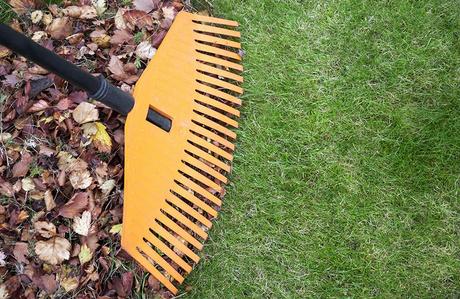
Did you know fall is the perfect time to prepare your lawn for winter? Jump on your fall lawn care. Take the opportunity to get your lawn healthy so it will maintain better during the cold winter months.
Stick with us as we share with you 4 simple steps for the perfect guide to fall lawn care.
Fall Lawn Care Schedule
Caring for your lawn doesn't have to be complicated. These 4 simple steps for fall lawn care will help to keep your lawn healthy throughout the winter while also preparing your lawn for the spring.
1. Remove All Leaves and Debris
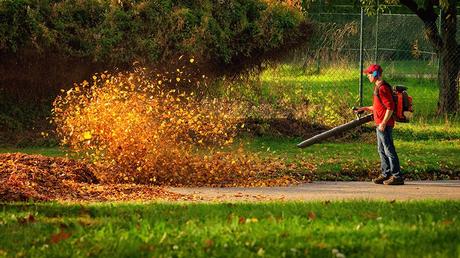
Many of us think raking our lawns and removing those dead leaves is just an annoyance. Numerous people leave them to cover our lawn with no worries as to the potential side effects. After all, the leaves can look pretty on the lawn when they are freshly fallen.
It may be worth it to take the time to clean up those pesky leaves. Leaves fall in fall (pun intended!) and we need to remove them from our lawns. Unfortunately, those fallen leaves can trap moisture in the ground and block out much-needed sunlight for your lawn.
If you stay on top of those leaves throughout the fall, it will go a long way to keeping your lawn healthy in the harsh months of winter. If you don't get rid of those leaves covering your lawn, you are more likely to see dead grass come spring.
You can remove leaves and debris in various ways. Try raking the leaves into piles and then scooping the leaf piles into bags to be hauled off. Depending on the setup of your lawn, you also might be able to use a leaf blower to get your leaves into a pile instead.
2. Keep Mowing
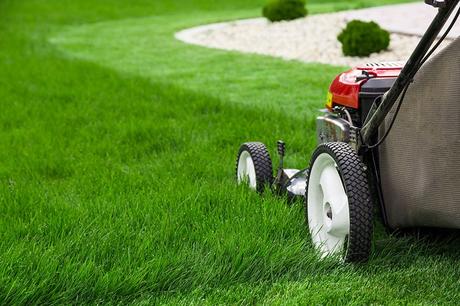
It might seem a bit odd but don't give up on mowing just yet. It is important for the health of your lawn to keep using your mower throughout those fall months.
You most likely will not mow the entire fall depending on your weather climate. In areas that get early snowfalls in the fall, mowing will not be ideal after that time. Mowing in the early fall is particularly important though, to the best of your ability.
Mowing in the fall looks slightly different than your typical mowing practices in the summer. Start by mowing your grass to a height of approximately 3 inches in total. Your root depth is directly proportional to the cutting height of your grass.
Cutting the grass too show for the winter will lead to a shallow root depth that can cause further issues later on in the season. Many blogs and tutorials would tell you to cut your grass even shorter than during the growing months but be mindful of the root length as it does make a difference.
3. Apply a Pre-Emergent (Weed Control)
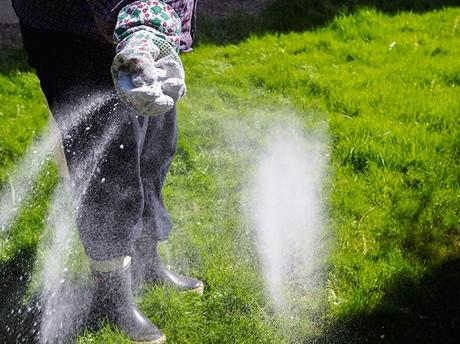
Paying close attention to your fall weather trends and forecast can come in handy for this part of the process. Knowing exactly when to apply weed control to your lawn is not the same answer for everyone. The timing can vary based on your climate and overall temperatures.
You should apply your pre-emergent herbicide to your lawn before the temperature starts consistently dropping below 70 degrees. Applying your weed control materials at the opportune time will go a long way to help stop those annual winter weeds from invading your lawn.
You can hire experts to take care of weed control and lawn care for you. Hiring the job out can quickly get expensive. These are simple things you can do on your own and most likely save yourself some money.
To properly apply weed control, pay close attention to the type of weed control you purchase for use. You should not freshly mow the grass prior to application. You also should not water your grass for at least 48 hours after application.
Here are some basic points on applying a pre-emergent weed control:- Do not mow the lawn directly before or after application
- Watch the weather for rainfall and work around any operational watering performed
- The lawn should be slightly damp at application (you can lightly water or apply early morning with the dew on the lawn).
- Do not water the lawn for at least 48 hours after application (this is where the forecast might be helpful for planning)
- Try to keep traffic to a minimum on the lawn for at least 24 hours.
If you're not sure what weed control product to use, we have some recommendations for you.
Check out these highly-rated pre-emergent herbicides from Prodiamine and The Anderson's. Both of these come in granular form and can be applied using the aforementioned tips.
4. Apply a Winterizer Fertilizer
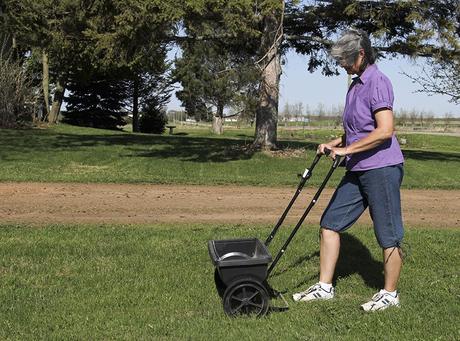
You may know the term winterizer fertilizer more as fall fertilizer. These terms are interchangeable and mean the same thing.
Applying a fall fertilizer will give your lawn much-needed nutrients to help it survive the winter months. This fertilizer application will also feed your lawn so that when the time comes in the spring, your lawn will begin to grow in a healthy way.
Again, timing for your winterizer fertilizer could vary based on your climate. You should pay close attention to your weather patterns. Chances are, you are already somewhat familiar with your location's cycles and may have a good idea as to the best timing. Do the research for your area to get the timing just right.
Experts recommend applying winterizer fertilizer approximately three weeks before your ground freezes up. Typically, the best time to apply your winter fertilizer will be in late September or early October. You certainly don't want to wait until it's too late so this will give you a good timeframe to work with.
Don't skip the winterizer fertilizer step in your fall lawn care. This may seem like such a small action but it is arguably one of the most important steps in keeping your lawn healthy through the winter.
Optional Extra Steps
There are 2 additional steps you can take to help maintain the health of your lawn. These two steps can be quite helpful but they are not required for basic fall lawn care.
Overseed (Fill in Empty Spots)
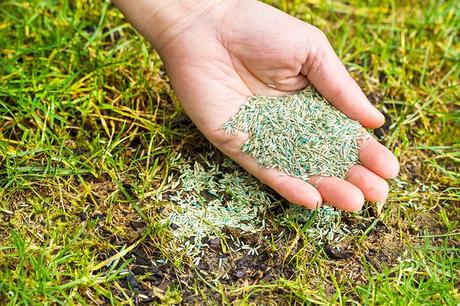
In the winter months, our lawns tend to look bare and forlorn. We might see them lose their lush color or have spots that appear to have little to no healthy grass.
Another step you can take in the fall is to overseed your lawn. This process is done by adding seed to a lawn that already has planted and growing grass. You are adding seed on top of your growing grass to fill in those bare or empty spots.
Overseeding is most often used to fill bare spots but it can also make your lawn look more luscious and healthy as an end result.
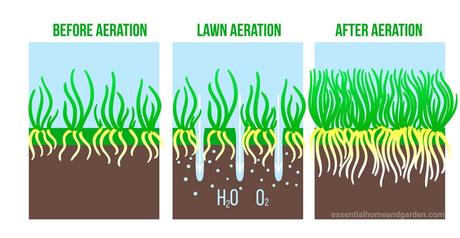
Aerating your lawn is one of those things many people disregard. There are many myths that lead people to believe it simply doesn't matter. While it is not essential, it can produce positive results in your fall lawn care practices.
Aerating works by allowing oxygen and moisture to penetrate the ground and be received deep in the root of your grass. This keeps your grass healthy from the root up. Aerating your lawn will also do a lot to prevent the ground from becoming compacted and hard to work with.
The two types of aerator tools include plug aerators and spike aerators. Most of the time these attach in a pull-behind method but there are handheld options as well and various different setups of options that can work for you.
If you don't want to purchase your own aerator, you can rent/hire these for $100 roughly or look up local lawn care and maintenance services. This rental rate is just an approximate amount for a daily rental. You might be able to rent one based on hours or even weeks as well.
Fall Lawn Care FAQ
When Should I Fertilize My Lawn in Fall?
For the best results, it is recommended to apply fall fertilizer about 2-3 weeks before the ground freezes. You can typically apply your fertilizer anywhere from late September to mid-October.
Can You Seed Your Lawn in the Fall?
The fall might actually be the optimal time for seeding your lawn. It is also a great time for overseeding to fill in bare spaces and holes. Seeding your lawn in the fall gives you the advantage of warm soil without the worry of excessive heat. Your seed will have the entire fall season and a nice, cool spring season to thrive.
What is the Best Fertilizer for Grass in the Fall?
Look for a fertilizer that contains nitrogen or a similar substance. We recommend using a granular fertilizer as it can set into the lawn much better for the timeframe. Our favorite options come from Prodiamine and The Anderson's brands.
When Should You Stop Mowing in the Fall?
You should persist in your mowing efforts until the grass stops growing in the fall seasons. Most grass will stop growing when temperature remains consistently below 50 degrees Fahrenheit. Mow through early fall and monitor your grass growth from there.
What Happens if I Fertilize Too Late or Too Early for Fall?
If you fertilize too early, you run the risk of fertilizing those pesky weeds in your lawn. If you fertilize too late, it simply won't have the opportunity to truly protect your lawn. This is why we recommend a fairly specific timeframe from late September to mid-October for the best results.
We hope that through this simple guide to fall lawn care we have portrayed just how important it is to take advantage of the season.
Fall lawn care can be quite simple with the steps and tips provided above. Be sure you prepare a plan and a timeline for your fall lawn care steps. This will help you to stay on track and not forget any important steps throughout the process.
Use fall as a time to prepare your lawn for the harsh winter months so that you can enjoy a strong and healthy lawn when spring rolls around. If you are proactive in your lawn care, your spring lawn care will be much easier.
